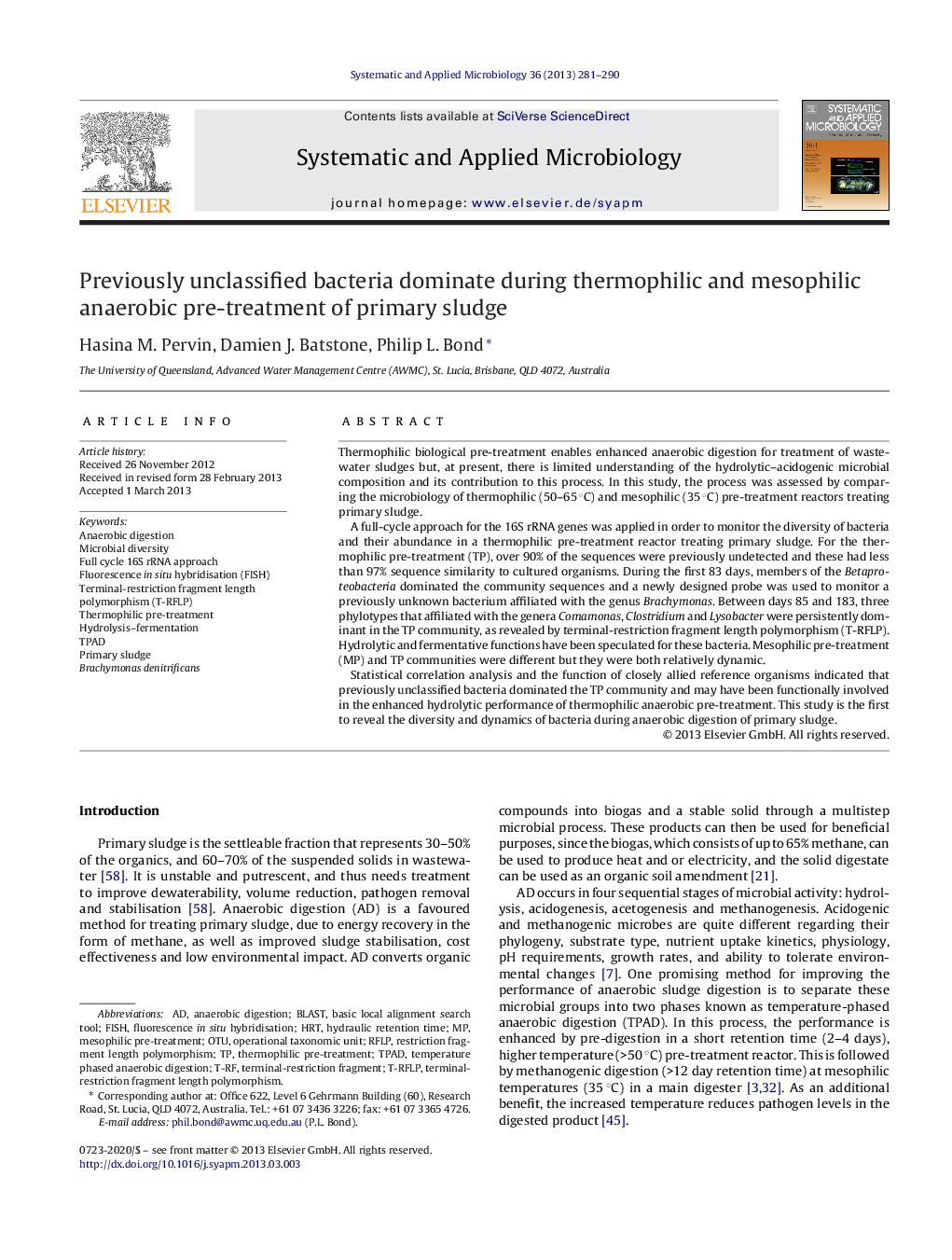| Article ID | Journal | Published Year | Pages | File Type |
|---|---|---|---|---|
| 2063787 | Systematic and Applied Microbiology | 2013 | 10 Pages |
Thermophilic biological pre-treatment enables enhanced anaerobic digestion for treatment of wastewater sludges but, at present, there is limited understanding of the hydrolytic–acidogenic microbial composition and its contribution to this process. In this study, the process was assessed by comparing the microbiology of thermophilic (50–65 °C) and mesophilic (35 °C) pre-treatment reactors treating primary sludge.A full-cycle approach for the 16S rRNA genes was applied in order to monitor the diversity of bacteria and their abundance in a thermophilic pre-treatment reactor treating primary sludge. For the thermophilic pre-treatment (TP), over 90% of the sequences were previously undetected and these had less than 97% sequence similarity to cultured organisms. During the first 83 days, members of the Betaproteobacteria dominated the community sequences and a newly designed probe was used to monitor a previously unknown bacterium affiliated with the genus Brachymonas. Between days 85 and 183, three phylotypes that affiliated with the genera Comamonas, Clostridium and Lysobacter were persistently dominant in the TP community, as revealed by terminal-restriction fragment length polymorphism (T-RFLP). Hydrolytic and fermentative functions have been speculated for these bacteria. Mesophilic pre-treatment (MP) and TP communities were different but they were both relatively dynamic.Statistical correlation analysis and the function of closely allied reference organisms indicated that previously unclassified bacteria dominated the TP community and may have been functionally involved in the enhanced hydrolytic performance of thermophilic anaerobic pre-treatment. This study is the first to reveal the diversity and dynamics of bacteria during anaerobic digestion of primary sludge.
